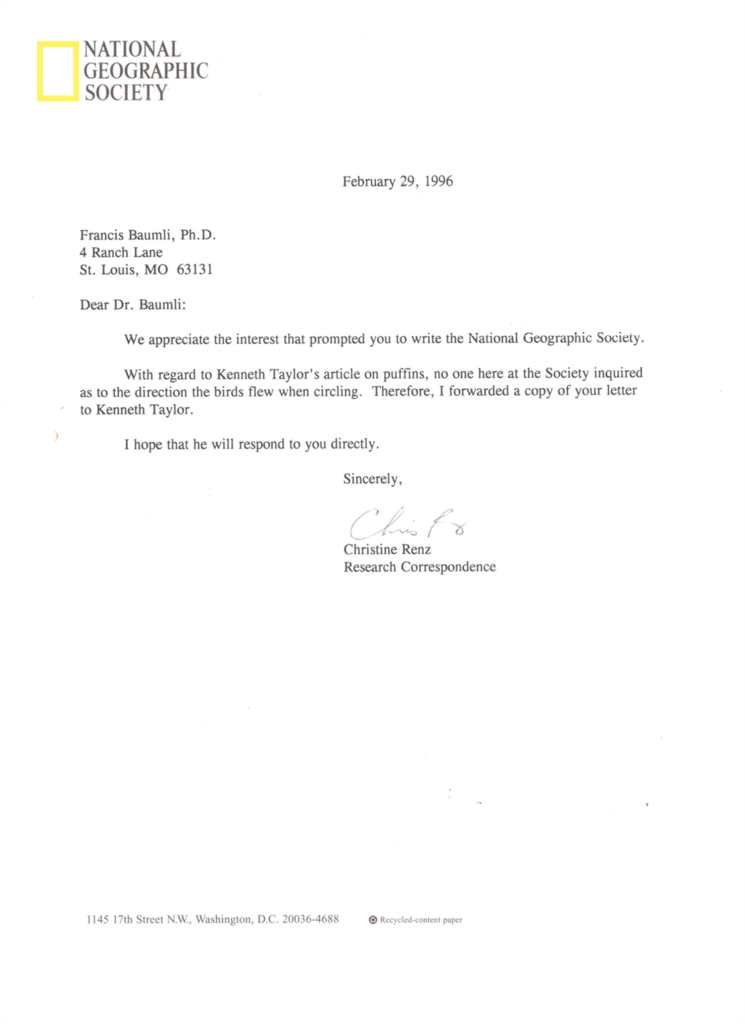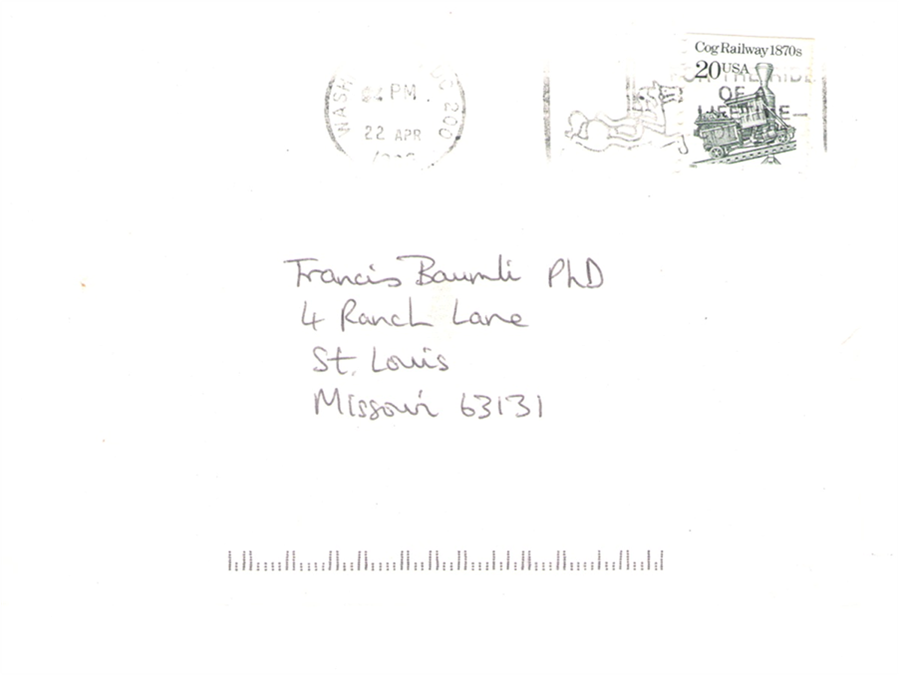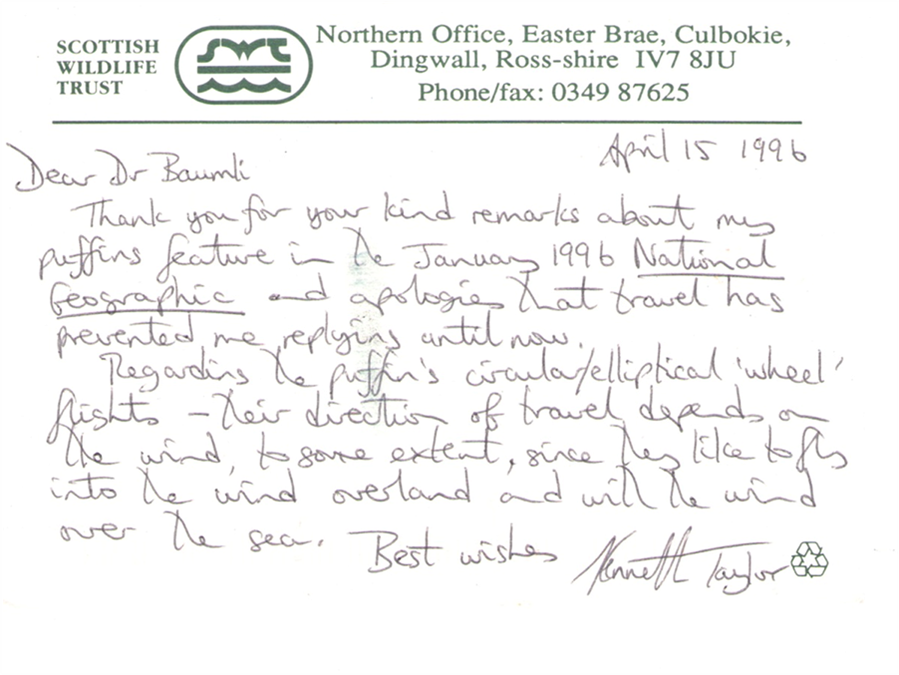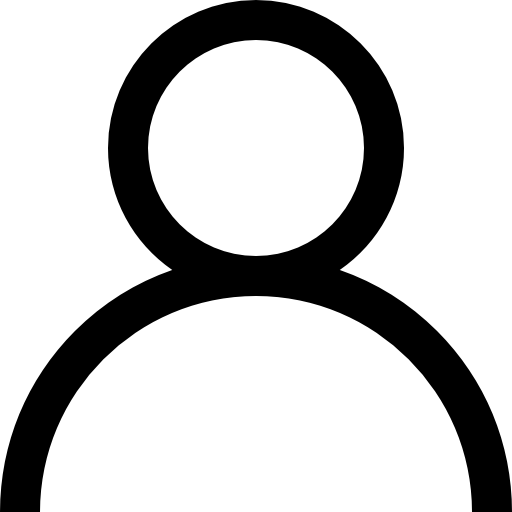PUFFINS AND PALTRY THINKING
by Francis Baumli, Ph.D.
(The following is an exchange of correspondence between myself, National Geographic Magazine, and one of their writers. I suggest that, after first reading my initial letter and the response by National Geographic Magazine, you next very carefully read the brief reply by Kenneth Taylor so you may then pause and ask yourself what went wrong, i.e., what did Mister Taylor fail to do?)
Francis Baumli, Ph.D.
4 Ranch Lane
St. Louis, Missouri
63131
Phone: (314) 966-2167
Letters to the Editor
Forum
National Geographic Magazine
Box 37448
Washington, D.C.
20013-7448
January 23, 1996
Dear Editors,
In the January 1996 National Geographic the article on puffins, by Kenneth Taylor, was informative, charming, and extremely well written.
We who are interested in the migratory habits of birds gather every possible detail about their flight behavior. On pages 122-123 Mr. Taylor described the flight patterns of puffins as they make several circuits above their colony before moving from sea to land or vice versa. In describing this circular flight pattern, he stated that other puffins “join in, flying in the same direction to avoid head-on collisions.” Did Mr. Taylor happen to note the direction of their flight-whether clockwise or counterclockwise?
Very truly,
Francis Baumli, Ph.D.
St. Louis, Missouri
(314) 966-2167



NOTE: The above reproduction is of both the front and back of Mister Taylor’s postcard. In case you have difficulty reading what he wrote, I here type it out:
April 15 1996
Dear Dr Baumli
Thank you for your kind remarks about my
puffins feature in the January 1996 National
Geographic and apologies that travel has
prevented me replying until now.
Regarding the puffin’s circular/elliptical ‘wheel’ flights—their direction of travel depends on
the wind, to some extent, since they like to fly
into the wind overland and with the wind
over the sea.
Best wishes
Kenneth Taylor
************************************
When I wrote the above short letter to National Geographic Magazine I was hoping for an answer, and since being a writer is what I do, I was hoping they would publish my letter along with the author’s answer.
They did not publish my letter, perhaps because the author of that original article was understandably tardy with responding to my letter, but likely the main reason was because they simply receive so many letters that they cannot publish them all.
But at least the author did respond, which was common back in those days, and virtually never happens these days (I write this in 2016). However, I showed this small bit of correspondence to probably 30 people, and not one of them espied the obvious: that although the author replied to my query, he in no way answered my question.
To my question it makes no difference that the puffins’ direction of travel to some extent depends on the wind—preferring to fly into the wind if over the land, and with the wind if over the sea. It still is the case that Mister Taylor wrote about how the puffins like to make several “circuits” above their colony before they move from land to sea or vice versa. In this preliminary part of their journey, i.e., before they commence in the direction of their main flight, they are flying in circles. This means they are spending almost exactly as much time flying into the wind, as they are flying with the wind, while making these circles. Thus, the direction the wind is blowing when they commence in the direction of their actual journey has nothing to do with whether their preliminary circling involves flying clockwise or counterclockwise.
In other words, my actual question was neither answered nor even addressed.
But the author thought he had addressed it. My friends and colleagues who read this exchange also thought he had.
I, however, was immediately aware that he had not. Which causes me to wonder: Am I the only one who can be omniscient on these matters?
(You need not ponder this question. I assure you that it is posed somewhat rhetorically.)
(Written: Jan. 23, 1996
and Mar. 12, 2016.)
(Posted: Apr. 18, 2016.)


